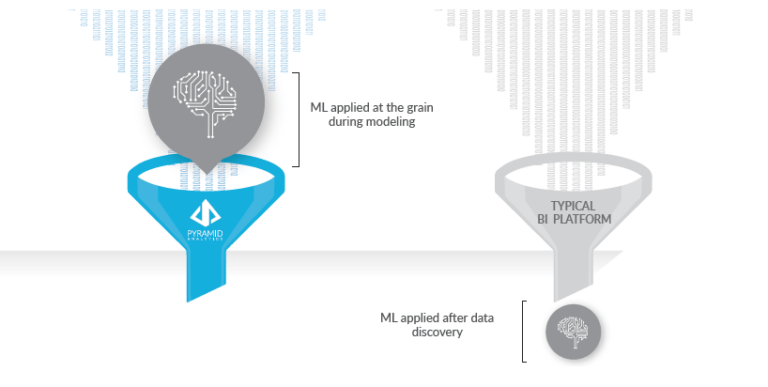Resource library
Get the latest resources on analytics, data science, and business intelligence from Pyramid

Pyramid Analytics named Strong Performer in Gartner’s Voice of the Customer
Thanks to our extensive capabilities and customer-first culture, 94% of peers said they would recommend…

Why generative AI is the next big thing in business intelligence
Pyramid’s CEO Omri Kohl explains how GenBI completely revolutionizes the way business interact with data.

Choosing the Right LLMs to Solve Your Analytics Challenges
We take a look at why a multi-LLM strategy and accessing the right LLMs will…

Scalable Embedded Analytics with Pyramid
To make business analytics more accessible and relevant, organizations have been striving heavily to put…

Data Visualizations with BI Software
Our BI software allows for high level data visualizations, so you can tell a story…

Querying Unstructured Data with Pyramid
The lack of effective methods for how to analytically use unstructured data is a common…

What is the Analytics OS?
Operating systems are fundamental to our use of computer technology. When we turn on our…

Power to the people: Citizen data scientists need the right tools to succeed
Today’s business users have a passion for data. Gartner calls them citizen data scientists. And…

How to Cut Data Preparation Time for Visualization Tools
Specialized data preparation tools have emerged as powerful toolsets designed to sit alongside our analytics…

What separates narrative reporting from traditional reporting?
In the good old days, it was OK if things took a little more time.…

Gartner Data and Analytics Summit 2017: useful analytics versus futuristic applications
The Gartner Data & Analytics Summit 2017 in London this year was busier than ever…

A playbook for the Chief Data Officer: How to be successful in this ground-breaking role
We’ve talked in the past that the key to a company’s success—or failure—in today’s digital…

Learn the top reasons ProClarity customers are migrating to Pyramid Analytics – part 3
Welcome to part 3 of my 3-part blog series, where I share reasons #5 and…

Learn the top reasons ProClarity customers are migrating to Pyramid Analytics – part 2
Welcome to part 2 of my 3-part blog series, where I share reasons #3 and…

Learn the top reasons ProClarity customers are migrating to Pyramid Analytics – part 1
Welcome to part 1 of my 3-part blog series, where each week I will share…

Pyramid Analytics recognized in Gartner’s 2017 Critical Capabilities report
Pyramid Analytics recognized in Gartner’s 2017 Critical Capabilities for Business Intelligence and Analytics Platforms report…

Meeting the business analytics challenge in 2017
Business analytics is one of the fastest growing and most exciting tier 1 applications in…

Buying the right BI: Four questions to ask when choosing an analytics platform for your business
We live in a data-rich world that requires a new approach to enterprise business intelligence.…


